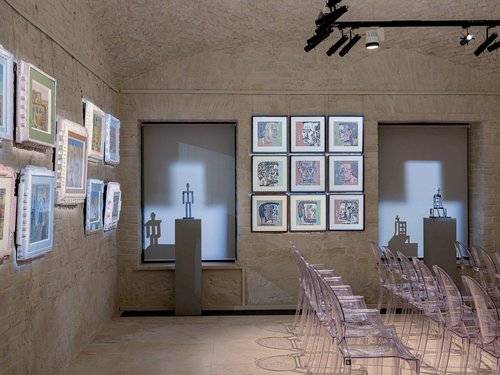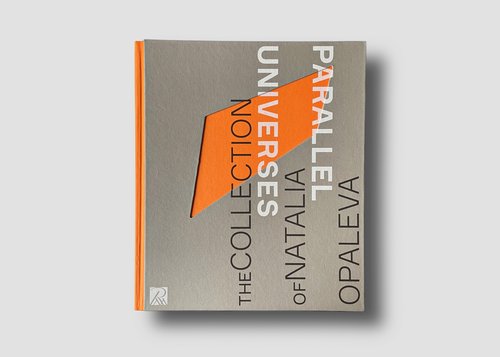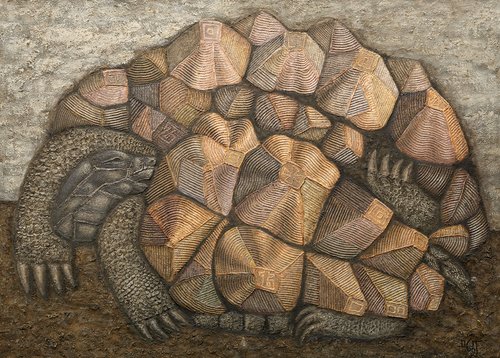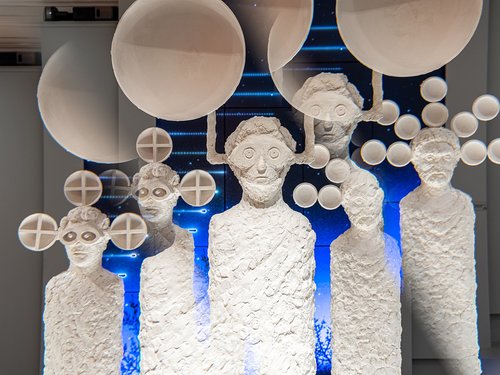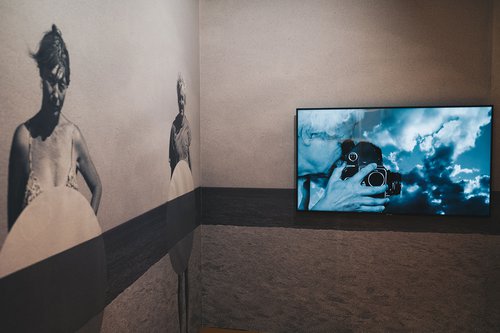Museumification of the Unconscious
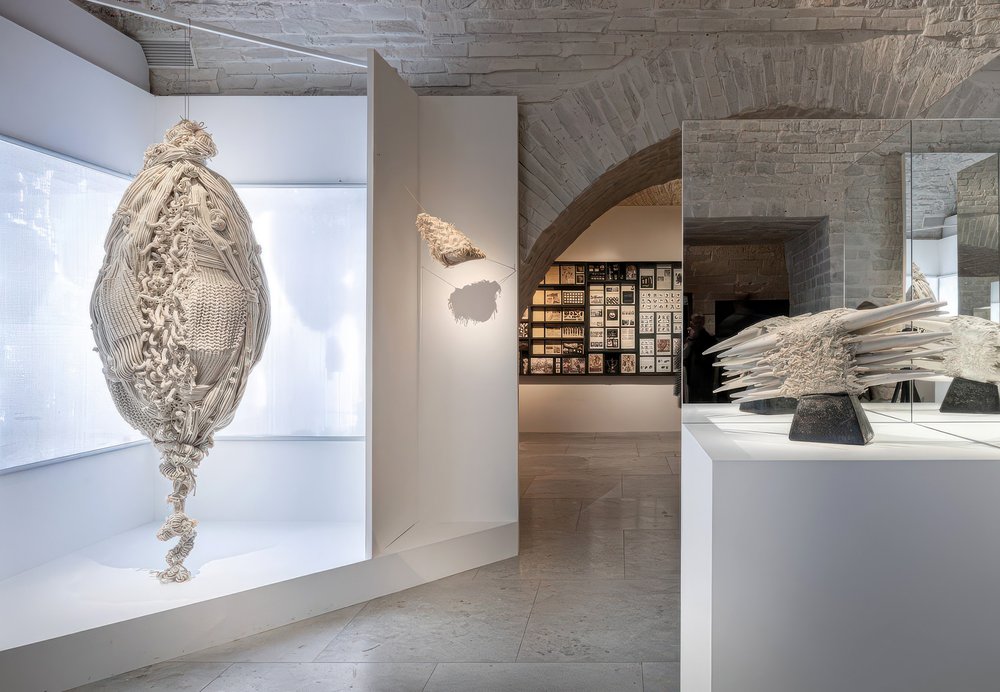
‘Algorithms of Cognition’. The Festival-Intensive. Exhibition view. Moscow, 2025. Courtesy of AZ/Art
In Moscow – ‘Festival-Intensive’ is a triumvirate summer exhibition at the Contemporary Art Centre AZ/Art with three artists showing in each project and it shines a light on the polyphony of exhibition life in the Russian capital.
‘Festival-Intensive’ delivers a bumper succession of different contemporary art exhibitions in Moscow of work by artists both well known in Russia as well as unfamiliar names: Platon Infante (b. 1978), Valery Grikovsky (b. 1975), Yulia Klopova (b. 1971) and Lilia Pedak (b. 1937), Elena Gubanova (b. 1960) and Ivan Govorkov (b. 1949), Apandi Magomedov (b. 1956), Flowers of Jonjoli Group, Khvoyniye Association, Mikhail Rubankov (b. 1983), Irina Korina (b. 1977).
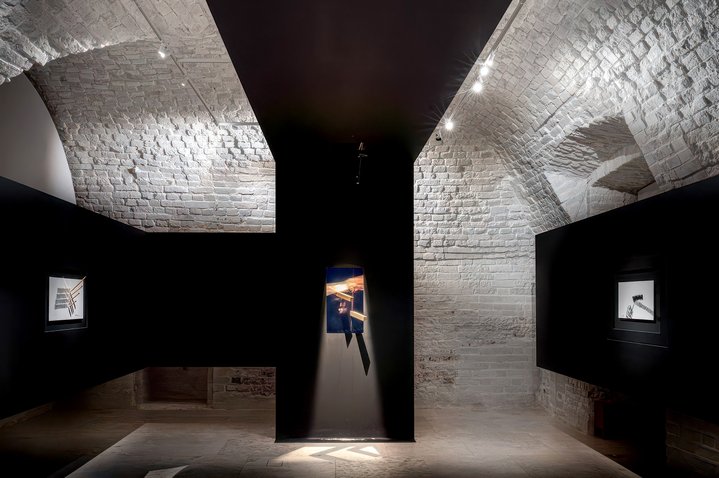
‘Algorithms of Cognition’. The Festival-Intensive. Exhibition view. Moscow, 2025. Courtesy of AZ/Art
For the uninitiated, Jonjoli are pickled sprouts from a plant which grows in the Caucasus, and it is impossible to imagine local cuisine without it. Beyond Georgia it is almost unknown, because the plant that gave this dish its name grows nowhere except in Colchis.
And ‘Jonjoli Flowers’ is an art group that probably could not survive anywhere except in St Petersburg. Established in 2022, among the founders of the group are charismatic husband and wife Alexander Tsykarishvili (b. 1983) and Liza Tsykarishvili (b. 1988); and Grecht (b. 1989) the pseudonym of an artist who does not appear in public. But the real number of participants in every Jonjoli projects is always in flux.
Are there four? Or five? When I ask about the exact number of artists who worked on the recent installation at AZ, the group members themselves become confused. For them authorship is born through the process of participation. Someone finds a basin, someone else adds a hat, a third – a pedestal, and as a result a composition of found and made elements materialises. So, found objects are equal in rights to those that they make from scratch; objects created for the exhibition in Moscow are on a par with those that existed before; fruits of instantaneous fantasy level with carefully processed artworks. Time-and-place are included in the integral work, which cannot exist anywhere except in the space for which it was produced.
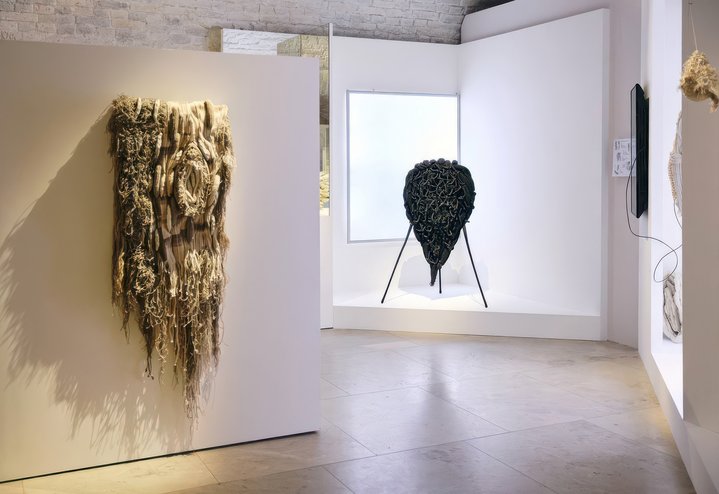
‘Algorithms of Cognition’. The Festival-Intensive. Exhibition view. Moscow, 2025. Courtesy of AZ/Art
Established in 2013, ‘Jonjoli Flowers’, is a collective that has survived on the ruins of the artistic association ‘Sever-7’ ‘(North-7)’ which was the most active art group in St Petersburg during the 2010s and lasted for the best part of a decade. Beginning with small group exhibitions in their own independent space, they eventually were making major displays at art fairs and in museums. The number of artists in ‘Sever-7’ was around 9+, as many came and went with some artists taking part in only some of the projects. A few years ago, when Anna Andrzhievskaya (b.1989), Leonid Tskhé (b. 1983), and Nestor Engelke (b. 1983) left Sever-7, the remaining artists became even more closeknit, so much so that in their new installation at the Contemporary Art Centre AZ/Art it is difficult to distinguish different artists behind individual parts. There is a coalescence of metal and clothing, masks and graffiti that looks as if a provincial museum of contemporary art had been compressed into one small space, then randomly cut up, the contents spat out into the face of stunned viewers. ‘Jonjoli Flowers’ search for a language to express the chaos of post-2022 Russia. This is the pulse of the Russian collective unconscious contained in one space.
Originally an artist from St Petersburg, Alexander Dashevsky (b. 1980) has more recently become better known in Moscow as a curator. When last year Museum AZ moved out of its regular building into a new space on the Maroseyka-Pokrovka – a Moscow street known for its bars and clubs – it turned into a haven of peace and artistic contemplation amidst the noisy crowds of party goers. Alexander Dashevsky became its main curator and the institution was rebranded the Contemporary Art Centre AZ/Art with a new programme of art far broader than the original focus on the non-conformist art of the 1960s and 70s. If the Cyrillic letters in the title ‘Museum AZ’ originally came from the initials of iconic Soviet nonconformist artist Anatoly Zverev then writing them in the Latin script brings a whole new meaning: the notion is that here you will now see contemporary art from ‘A to Z’.
Unfortunately, in Moscow contemporary art exhibitions are not well attended, so galleries need to come up with stratagies to increase footfall like offering free admission or transforming the institution into a ‘cultural space’ with an endless list of functions and events, both approaches seen at GES-2. Such initiatives are often unaffordable for small independent art institutions who otherwise need to be inventive with their exhibtion programmes.
In Moscow it is hard to get yourself known to the public if you are a young artist because despite the fact that each year the School of Contemporary Art ‘Free Workshops’ throws out nearly a hundred new artists into life, few of them will ever be recognised, finding themselves in the same arena as experienced gladiators. Fortunately, St Petersburg is a reservoir and happy source of new names where there is less competition and more solidarity where fledgling artists can grow their own language and statements before they are picked up by curators and galleries in Moscow. So, a curator from St Petersburg relocating to Moscow brings the capital’s art scene an element of novelty that is always popular.
Valery Grikovsky's ‘Minus-museum’, which was shown at AZ in June during the first iteration of ‘Festival-Intensive’, is another St Petersburg phenomenon. Grikovsky graduated from the city’s medical institute but following the collapse of the USSR and with it the Soviet scientific infrastructure, he decided to become an artist and today his installations uniquely combine absurdist humour with the meticulousness of a vivisector, surrealist imagination with scientific descriptions. His multi-part works look as if the reliquaries of Joseph Cornell (1903–1972) reliquaries have grown to the size of Marcel Broodthaers' (1924–1976) installations, executed with the crude humour of Pieter Bruegel (c. 1525–1569) and the obsessive detail of Pavel Filonov (1883–1941). Often he prefers to call his series ‘collections’, such as the collection of mermaid tears or the collection of stones of stupidity from the heads of urban dwellers.
One of Grikovsky’s main sources of inspriation is the local history museum where next to a stuffed wolf one can see a coin from some extinct kingdom, a brick from forgotten ruins and a detailed description of all these as a unified whole. However, in Grikovsky’s own ‘Minus-museum’ you will only find myths, legends and phantasmagorias as he researches the unconscious through the method of museumification. Thus the ‘collection’ of hallucinations of Vladivostok residents comes to life. And the artist’s tour of his own installation is like a scientific lecture in a Kunstkammer where the lecturer can tell the story of a horned rabbit in such a way that all the listeners believe in the reality of its existence.












